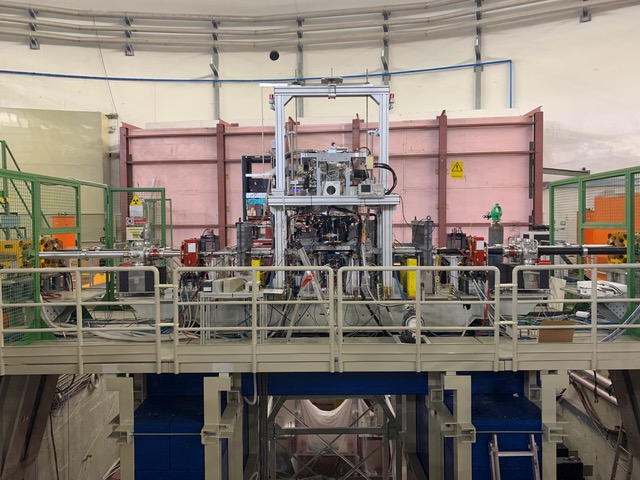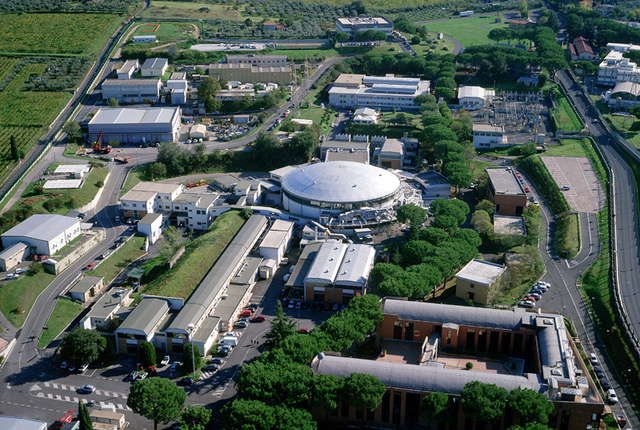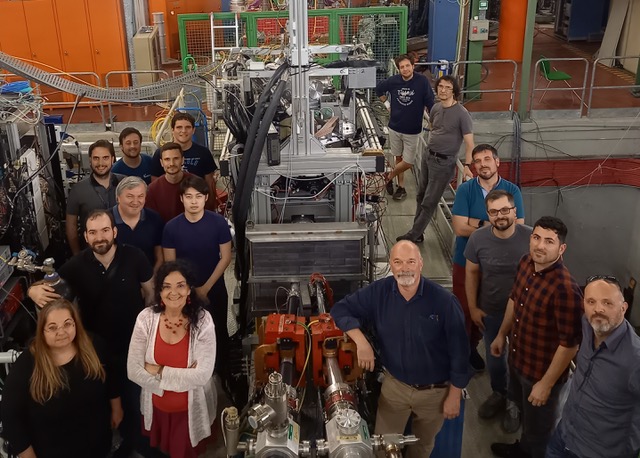 Over 40 years ago, the measurement of X-ray transitions to the fundamental level in kaonic deuterium—an exotic atom where an electron is replaced by a negatively charged kaon (a particle composed of a “strange” quark and an “up” anti-quark)—was identified as a crucial experiment in kaon physics at the low-energy frontier.
Over 40 years ago, the measurement of X-ray transitions to the fundamental level in kaonic deuterium—an exotic atom where an electron is replaced by a negatively charged kaon (a particle composed of a “strange” quark and an “up” anti-quark)—was identified as a crucial experiment in kaon physics at the low-energy frontier.
This experiment is vital for theoretical studies of strong interactions in systems with strangeness, impacting particle and nuclear physics, as well as astrophysics. Despite its importance, the measurement is exceptionally challenging due to the rarity of X-ray transitions to the fundamental level in kaonic deuterium, which has eluded all previous attempts.
For the first time, the SIDDHARTA-2 international collaboration has successfully conducted the kaonic deuterium measurement using the unique low-energy kaon beam provided by the DAΦNE Collider at INFN-LNF. The data-taking campaign began in May 2023, with two periods of runs (Run 1 and Run 2) in 2023, and continued in 2024 with Run 3, achieving the required 800 pb⁻¹ of integrated luminosity. During these runs, measurements of other kaonic atoms, such as kaonic helium, and neon for calibration purposes, also delivered unprecedented precision results, published in a series of articles. Preliminary analysis from the kaonic deuterium Run 1 data appears extremely promising.
 The SIDDHARTA-2 experiment, designed for high-precision X-ray spectroscopy in the high-radiation environment of a particle collider, involved an international collaboration that developed innovative Silicon Drift Detectors (SDDs) and additional detectors, including a kaon trigger and three veto systems to reduce the background.
The SIDDHARTA-2 experiment, designed for high-precision X-ray spectroscopy in the high-radiation environment of a particle collider, involved an international collaboration that developed innovative Silicon Drift Detectors (SDDs) and additional detectors, including a kaon trigger and three veto systems to reduce the background.
The kaonic deuterium measurement has been possible thanks to the remarkable performance of the DAΦNE lepton collider. DAΦNE, an accelerator complex built in the 1990s, regained a central role as a research tool owing to the development of the new Crab Waist collision scheme, which led to increase of the machine luminosity up to a factor of three. DAΦNE continues to be a unique machine in the world for physics studies requiring low-energy kaons with momenta below 140 MeV/c.
The SIDDHARTA-2 run has been carefully prepared, revising and optimizing the collider rings optics, and studying solutions to increase the signal-to-noise ratio on the experimental detector. Preparatory upgrades, together with continued machine tuning during operations, and selected machine studies allowed DAFNE to achieve remarkable performances, featuring in a reproducible way a peak luminosity of the order of 2.4 1032 cm-2s-1, and a daily integrated luminosity of about 10 pb-1. Overall, the integrated luminosity delivered to the detector during the deuterium run was about 1.4 fb-1; it includes data delivered during calibration, tests, and detector downtime.
Moreover, physics events acquired by the SIDDHARTA-2 detector exhibit a signal-to-noise ratio three times improved compared to the one measured in the previous SIDDHARTA run for kaonic hydrogen performed in 2009; this aspect was fundamental in order to detect the elusive kaonic deuterium transitions.
Initial optimization of the apparatus was achieved through measuring kaonic Helium-4 transitions to the 2p level, with a yield about 100 times higher than the transitions to the 1s level in kaonic deuterium. This resulted in the most precise measurement in a gas target, providing new data for theoretical models. In 2023, a refined optimization and performance check of the apparatus was conducted by measuring high-n X-ray transitions in kaonic neon with unprecedented precision below 1 eV. This not only contributed new data to the kaonic atoms database but also addressed the discrepancy in the charged kaon mass, a 30-year-long puzzle in physics.
The measurement of the shift and broadening induced by the strong interaction on the 1s level of kaonic deuterium, combined with previous kaonic hydrogen results obtained by the SIDDHARTA collaboration over a decade ago, will determine the isospin-dependent antikaon–nucleon scattering lengths, advancing our understanding of strong interaction in the non-perturbative regime.
The experiments at the DAΦNE collider present a unique global opportunity to unlock the secrets of QCD in the strangeness sector and enhance our understanding of the role of strangeness in the Universe, from nuclei to stars. Relying on the success of SIDDHARTA-2, the EXKALIBUR collaboration is poised to set a new standard in kaonic atom research with groundbreaking original measurements at the DAFNE Collider.
 INFN-LNF Laboratori Nazionali di Frascati
INFN-LNF Laboratori Nazionali di Frascati
